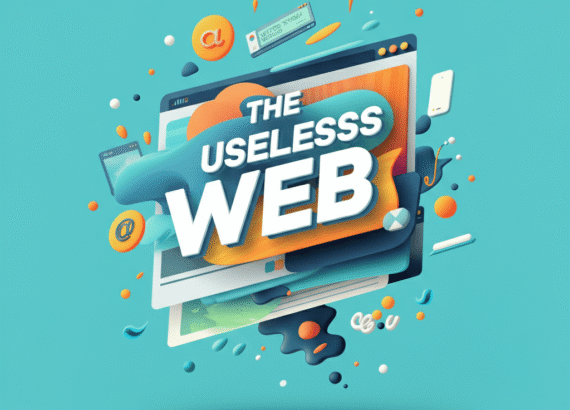The Ultimate Guide to Website Development: Boost Your Brand’s Success Now!
In today’s digital landscape, having an effective and impactful website is crucial for the success of any brand. A well-developed website not only serves as the face of your brand but also acts as a powerful tool for attracting and engaging customers, driving traffic, and ultimately boosting your business’s success. This comprehensive guide will take you through the essential steps and strategies involved in website development, offering valuable insights and practical tips to help you create a website. Whether you are a seasoned web developer or just starting out, this guide will equip you with the knowledge and tools necessary to take your brand’s online presence to new heights. Let’s dive in!

1. Understanding the Importance of Website Development for Brand Success
The Role of Website Development in Branding
When it comes to building a successful brand, having a strong online presence is crucial. And that’s where website development comes into play. Your website acts as the virtual storefront for your brand, representing your values, products, and services to the world. It’s like the cool kid in school who everyone wants to hang out with – your website needs to be popular, attractive, and make a lasting impression.
Benefits of Investing in Website Development
Investing in website development offers a plethora of benefits for your brand. Not only does it provide a platform to showcase your products or services, but it also enables you to connect with your target audience on a deeper level. A well-designed and user-friendly website can increase brand awareness, improve customer trust and loyalty, and even drive sales. It’s like hitting the jackpot, but without all the flashy lights and slot machines.
Impact of User Experience on Brand Perception
User experience is the secret sauce that can make or break your brand. When visitors land on your website, you want them to have a smooth and enjoyable experience, like sliding down a rainbow on a unicorn. A positive user experience not only keeps visitors engaged but also leaves a lasting impression, which they’ll happily share with their friends (and maybe even their weird Aunt Sally). On the other hand, a frustrating user experience can lead to a tarnished brand image, like accidentally using salt instead of sugar in your mom’s famous chocolate chip cookies.
2. Step-by-Step Guide to Planning Your Website Development Strategy
Defining Goals and Objectives for Your Website
Before diving headfirst into website development, it’s essential to define clear goals and objectives. Whether it’s increasing online sales, generating leads, or simply providing information, knowing what you want to achieve will guide your entire development process. It’s like going on a road trip without a destination – you’ll end up lost and frustrated.
Conducting Market Research and Competitor Analysis
Conducting thorough market research and competitor analysis will help you identify industry trends, understand your target audience’s needs, and discover gaps in the market that your brand can fill. It’s like being Sherlock Holmes, but without the funny hat and weird British accent.
Creating a Website Development Timeline
Time is of the essence, especially in website development. Creating a detailed timeline will help you stay organized and ensure that your project stays on track. It’s like having a personal assistant who keeps you in check but without all the judgmental stares.
3. Choosing the Right Web Development Technologies and Tools
Understanding Different Web Development Frameworks
Choosing the right web development framework is like choosing the right outfit for a party – it sets the tone for your entire website. Whether you opt for popular frameworks like React or Angular or prefer the simplicity of WordPress, understanding the pros and cons of each will help you make an informed decision.
Evaluating Content Management Systems (CMS)
A content management system (CMS) is like having a magical genie who grants all your website management wishes. From adding new pages to updating content, a good CMS makes it a breeze. Popular CMS options like WordPress, Shopify, or Joomla offer different features and functionalities, so it’s essential to evaluate which one aligns with your brand’s needs.
Selecting the Ideal Web Development Tools and Resources
Building a website without the right tools is like cooking a gourmet meal with a plastic spork. It’s just not going to cut it. Whether it’s design tools like Adobe Creative Cloud or development resources like GitHub, choosing the ideal web development tools and resources will make your life a whole lot easier.
4. Designing a User-Friendly and Engaging Website Interface
Creating an Intuitive Navigation Structure
Navigation is like the GPS of your website. You want your visitors to find what they’re looking for quickly and effortlessly, without any detours or dead ends. Creating an intuitive navigation structure ensures that users can easily explore your website and find what they need. It’s like a well-organized closet – no more rummaging through piles of clothes to find your lucky socks.
Incorporating Responsive Design for Mobile Devices
In a world where everyone’s glued to their smartphones, having a mobile-friendly website is a no-brainer. Incorporating responsive design ensures that your website looks and functions flawlessly on any screen size. It’s like having a magical shape-shifting website that adapts to fit any device – no matter if it’s a giant tablet or a tiny smartwatch.
Utilizing Effective Call-to-Actions (CTAs)
Call-to-actions (CTAs) are like superheroes for your website, guiding visitors to take specific actions like signing up for a newsletter, making a purchase, or contacting your team. Incorporating effective CTAs will help you drive conversions and achieve your website’s goals. It’s like having a persuasive friend who always convinces you to go for that extra slice of pizza.
5. Implementing Effective SEO Strategies to Drive Traffic and Improve Visibility
Conducting Keyword Research and Optimization
When it comes to SEO, keywords are king. Conducting thorough keyword research will help you understand what your target audience is searching for and optimize your website accordingly. Think of keywords as the secret code that unlocks your website’s potential. By strategically incorporating relevant keywords into your content, meta tags, and URLs, you can improve your search rankings and attract more organic traffic.
Optimizing On-page Elements for Better Search Rankings
Optimizing your on-page elements is like giving your website a makeover for search engines. From well-structured headings to meta descriptions and alt tags for images, every element plays a role in improving your search rankings. Make sure your website is easy to navigate, loads quickly, and provides valuable content that matches user intent. Remember, search engines are like picky eaters – they love a well-optimized website.
Building High-Quality Backlinks and Off-page SEO
Building high-quality backlinks is like having influential friends vouching for your website. Backlinks are links from other websites that direct users to your site, and search engines see them as a vote of confidence. Focus on building relationships with relevant and authoritative websites in your industry that can link back to your content. A strong off-page SEO strategy can boost your website’s credibility, improve search rankings, and increase your online visibility.
6. Integrating Social Media and Content Marketing for Website Success
Developing a Social Media Strategy for Website Promotion
Social media is like a matchmaker for your website. Developing a solid social media strategy will help you promote your website and connect with your target audience on platforms they love. Identify which social media channels your audience is most active on and tailor your content to suit each platform. Engage with your followers, share valuable content, and build a community that supports your brand.
Creating Engaging and Shareable Content
Content is the lifeblood of your website. Creating engaging and shareable content will not only keep your visitors coming back for more but also attract new ones through social media and search engines. Focus on providing value to your audience by creating informative, entertaining, and visually appealing content. From blog posts to videos and infographics, let your creativity shine and make your content the life of the online party.
Leveraging Social Media Channels to Drive Traffic to Your Website
Social media is the ultimate party invitation to your website. Leverage your social media channels to drive traffic and direct visitors to your website. Share links to your latest blog posts, product pages, or landing pages to entice your followers to click and explore. Engage in conversations, respond to comments, and encourage sharing to create a buzz around your brand. Remember, social media success isn’t just about followers – it’s about turning those followers into website visitors.

7. Optimizing Website Performance and Security for Enhanced User Experience
Enhancing Website Speed and Performance
Website speed matters – just ask impatient internet users. Enhancing your website’s speed and performance will not only keep your visitors happy but also improve your search rankings. Start by optimizing your images and minifying your code. Consider using a content delivery network (CDN) to ensure your website loads quickly, regardless of visitor location. Remember, a slow website is like a snail – it won’t get very far.
Implementing Robust Website Security Measures
Website security is like a bouncer at the entrance of a party – it keeps unwanted guests out. Implementing robust security measures will protect your website from hackers, malware, and other cyber threats. Install SSL certificates to encrypt data and establish trust with your visitors. Regularly update your software and plugins to fix vulnerabilities and stay one step ahead of potential attacks.
Conducting Regular Website Maintenance and Updates
Regular website maintenance is like giving your website a wellness check-up. Conducting updates, checking for broken links, and fixing any errors will ensure your website remains in tip-top shape. Regularly update your content to keep it fresh and relevant, and regularly test your website on different devices and browsers to ensure a smooth user experience. Remember, a well-maintained website is a website that stands the test of time.
Congratulations! You have now reached the end of “The Ultimate Guide to Website Development: Boost Your Brand’s Success Now!”
Remember, building a successful website is an ongoing process, so continue to stay updated with the latest trends, technologies, and user preferences. By consistently optimizing your website for user experience, implementing effective SEO strategies, and leveraging social media and content marketing, you will create a powerful online presence that resonates with your target audience and drives your brand’s success. Best of luck in your website development endeavors!

FAQ
1. What is the role of website development in branding?
Website development plays a crucial role in branding as it serves as the online representation of your brand. A well-developed website helps create a strong brand identity, communicates your brand’s values and messaging, and enhances brand recognition among your target audience.
2. Time to develop a website?
The time required to develop a website can vary depending on various factors such as the complexity of the design, the size of the website, the functionality required, and the availability of resources. Generally, a basic website can take anywhere from a few weeks to a couple of months to develop, while more complex websites can take several months or longer.
3. What are the key considerations when choosing web development technologies?
When selecting web development technologies, it is important to consider factors such as scalability, flexibility, security, ease of use, and compatibility with your business requirements. It is also essential to research and understand the pros and cons of different technologies, such as various web development frameworks and content management systems, to make an informed decision.
4. How can I measure the success of my website?
Measuring the success of your website involves analyzing various metrics, including website traffic, conversion rates, bounce rates, average session duration, and engagement metrics. Utilizing web analytics tools such as Google Analytics can provide valuable insights into your website’s performance and help you identify areas for improvement and optimization.
If you want to build your website in an affordable price contact: www.nextr.in
Read this: Why A Website Is Important For Brand Success

















